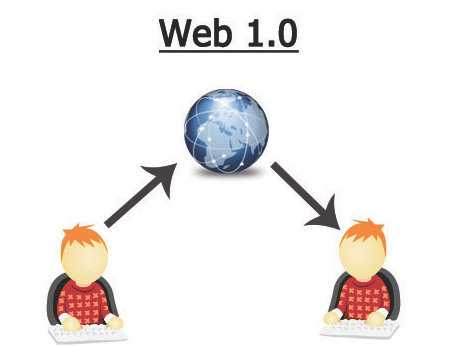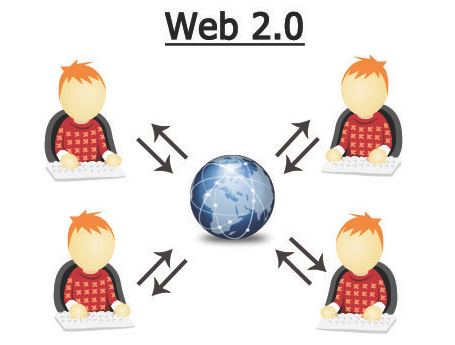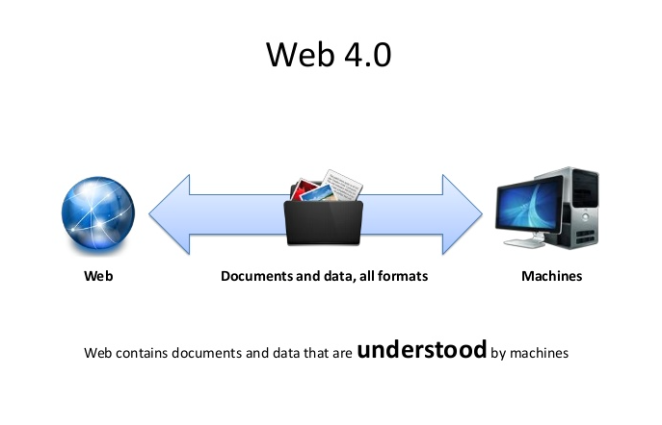What do these terms, Web 2.0, Web 3.0 mean? What about Semantic Web to the Internet of Things?
Like any field the world of social media networks and the internet is littered with terms and slang that help define any discussion about the web. However finding your way through this murky world of “ROTFL” and “The internet of Things’ can be a little tough for even the most online savvy of people. Let’s look at a few crucial terms and ideas that you will no doubt see shaping the web that will come. But before we step into the future, let’s very jump to the past to help give us some reference point to where we are going as we decipherer this langauge.
WEB 1.0 SEARCH – It starts with what was defined as Web 1.0. The web as most people experienced in perhaps the 90’s would have been more than likely a Web 1.0 site. It would have been static mainly based around search. It may have had some useful information but it would rarely if ever be updated. You could imagine it as a single page of a book placed up on the web and then left there for people to read. It was also unresponsive in the sense it was purely a one way feed of information. There was no interactivity between the person who was visiting the site. No comments, no collaboration, no community.
WEB 2.0 SHARE – This sets the scene for us to look at the first term on our brief but important list, web 2.0. So what is web 2.0? Is it simply an upgrade on the web muck like the operating system of your computer goes from one version to the next. A lot of people have tried to explain exactly what web 2.0 is and when it happened (reference) and it has been hard to get an absolute consensus. But what we can see is that web 2.0 fundamentally changed the relationship we had with the internet. While web 2.0 saw the introduction of new technology and standards a lot of it was the evolution of how we made use of the tools we had. web 2.0 saw the internet turn Interactive. People could comment, add, collaborate and share the information and entertainment they found on the web. This created the ability for communities. This whole piece could be written simple about Web 1.0 to web 2.0 but if you want to skip to the notes or to use a bit of net slang TLDR (too long didn’t read). 1.0 was one way traffic, 2.0 was two-way. 1.0 was static. Web 2.0 opened the web up to the conversation and communication of sharing we see now.
WEB 3.0 SEMANTIC – But what comes next? If Web 2.0 moved us forwarded to we are now. What about the idea of web 3.0, a term that is already been thrown about to try to describe perhaps what the next evolution of the internet could be. As we have already seen if Web 2.0 was hard enough for the experts to define then surely 3.0 must be even harder! Of late more often than not when people are discussing the idea of web 3.0 they refer to it as the Semantic web. The idea of this is that if web 2.0 was the ability to share, create and collaborate with information. Then web 3,o or the semantic web is the ability for the software, databases and services of the web to use and understand that information in a much more intelligent way. It is also loosely connected to the idea of the ‘Internet of things.’ Leveraging the power of what the information that has already been built through web 1.0 and the data and expansion of sharing in 2.0. The web as it moves into 3.0 will be able to sort through all of this data and present and connect it in ways that had previously not been possible.The idea of the semantic web is that it will understand the when you talk about the capital of france you mean Paris. It also means that information can be shared with devices that. connect to the internet. You can switch on your AC from you smart phone or dim the lights from your PC at work. Web 3.0 moves from our understanding driving connections to that of the computers and internet understanding to.
WEB 4.0 SYMBIOTIC – So web 3.0 moves us to the next which would be 4.0. The idea a symbiotic relationship between yourself and the web. It brings constant connectivity and the power of Web 3.0 being brought to the fore with personalised and individual interactions between not two people but a person and the web, or software running on the internet. Your homes air conditioning will know you have been for a run and that’s its 30 degrees outside, so it will adjust your home temperate to ensure you cool off when you get back. Perhaps even your fridge will now that you are out of sports drink and let you know you should grab some before you head out. This is all powered through the extension of the webs abilities to make connections between pieces of information. And just black and white ideas to. The symbiotic web it will even know the location and business when some describes that restaurant at the end of main street.’ It will also know that you are late due to traffic and alert your friends along with the maitre de that you will be there in 15 minutes. In short web 4.0 does not necessarily need an action from us to impact our lives, it will run in the background or foreground of our day-to-day activities regardless of where we are and what we are doing. Able to anticipate needs, handle tasks and make decisions on our behalf based on its combined information of us and the power of the web.
SENTIENT – Lastly we make the huge step to web 5.0 or the sentient web. The internet is no longer a series of servers and connections it houses an infinite number of sentient systems. Perhaps even including the uploaded memories, personalities and emotions of people who now longer have a physical presence on earth. Sound far-fetched? Perhaps but when you look at the idea of virtual worlds like the popular 2nd life and you combine this with exponentially increasing computing power. Huge all-encompassing databases of human knowledge and thought along with the idea of advance artificial intelligence. Is it too far to think that in the future a person might only exist online? Or perhaps it is the next step one takes after their time in the physical world? obviously we have a long way to go and many things could change the way the evolution of the web happens. But for now so long as the plug is still in and the power switch on, there maybe no limits to what it might do or become.




